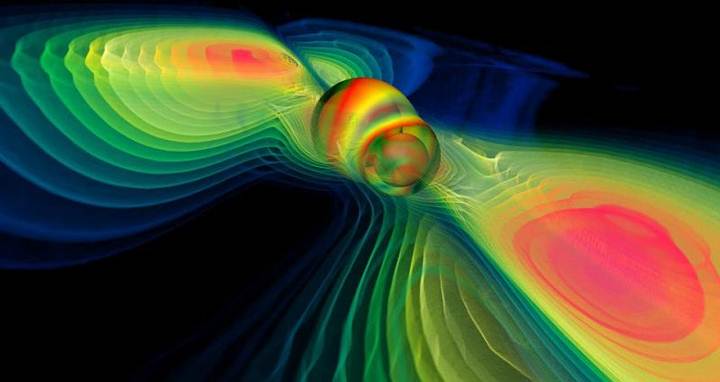Its incredible what astronomers will discover in our universe. Earlier this year, a team of scientists discovered that in the constellation Virgo are a pair of supermassive black holes approaching each other… such a collision would send a powerful burst of gravitational waves striking through the fabric space-time.
Now, in a study by Columbia University, published by the journal Nature, new information has surfaced suggesting that the pair of black holes are orbiting so close to each other – at only a light week, that they are causing rhythmic flashes of light originating from the quasar PG 1302-102.
Based on the calculations of the mass of this duo, and in relation to the other findings, researchers have predicted an explosion in 100,000 years from now, an incredibly long period for humans, but the blink of an eye for a star or a black hole.

Senior author, Zoltan Haiman said that this is the closest researchers have come to observing two black holes on their way to a massive collision, adding that watching this process reach its culmination can tell them whether black holes and galaxies grow at the same rate, and ultimately test a fundamental property of space-time: its ability to carry vibrations called gravitational waves, produced in the last, most violent, stage of the merger.
This incredible duo is located 3.8 light-years away in the constellation Virgo… the closest previously confirmed black hole pair is separated by 20 light-years which makes this finding one of its kind.
Researchers expect to be able to detect a black hole collision in the next decade thanks to the increasing number of discoveries. Only this summer, experts have reported another 90 candidates while waiting to publish further details and findings from data collected at the Palomar Observatory in California. As the number of discovered black holes increases, so do the chances of actually seeing a collision soon.